 |
|
| entry created: Sunday 25 December 2005, 5:07am (NZ time) | |
|
|
| Location: Märjamaa, Estonia |
| Local time: Saturday, 6:05pm |
| Music: |
 It's snowing. Yesterday morning it was -14 degrees celcius, but today it's much warmer, hovering around zero. It's snowing. Yesterday morning it was -14 degrees celcius, but today it's much warmer, hovering around zero. My first White Christmas. I'm back in Estonia now, many thousands of kilometers north of Egypt (which I think was my 30th country), and perhaps some 40 degrees colder! Nonetheless, it's good to be back. It's the 24th of December. In Estonia, Christmas Eve is the big day for opening gifts, having Christmas dinner etc (not the 25th like in NZ)... I'm looking forward to tonight! Häid Jõule, everyone! ------------- Here's another brief selection of photos I've taken along my journey, starting in Aswan - the most southerly city in Egypt, roughly 1,000km south of Cairo - and heading north again back to Cairo. 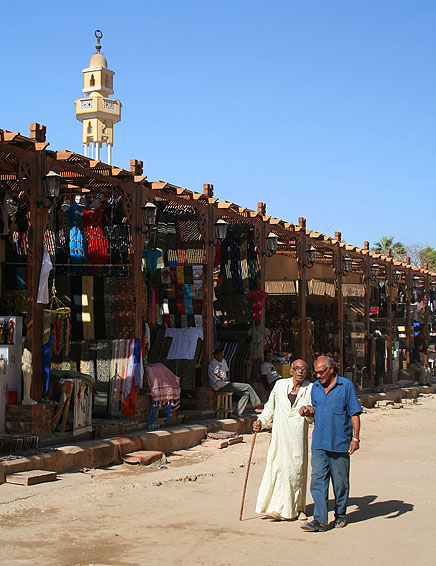 'Just friends'. Two men walk arm-in-arm through the market of Aswan. Egypt and the middle-East are very anti-gay/homophobic, so it surprised me how so many men would wander around holding hands! Difficult to look macho at the same time I reckon! 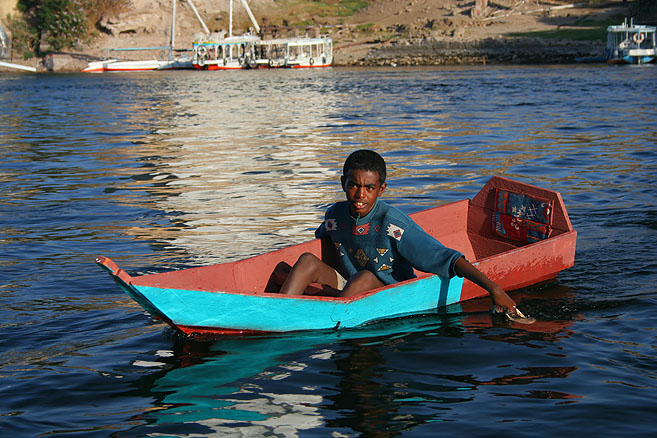 One of the locals paddled up to say hi, during my afternoon Nile Felucca trip around the islands in Aswan. 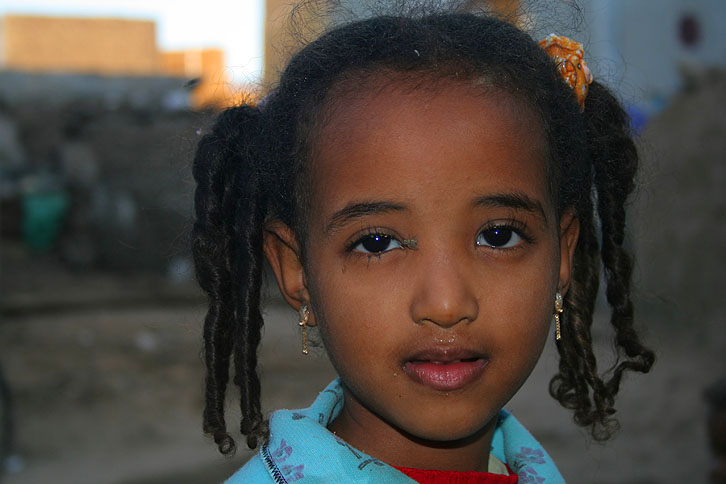 A small girl in the Nubian village on Elephantine Island. Living with so many flies, I guess they don't bother you after a while. 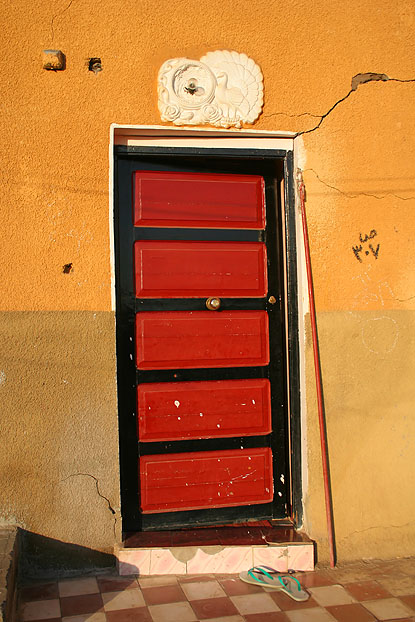 The front door of one of the Nubian houses.  The incredible Temple of Abu Simbel, built by the pharoah Ramesses II some time in the 13th century BC. A second temple nearby is dedicated to Ramesses' favourite wife, Nefertari. The temples were cut from the rock and shifted to higher ground in a four-year US$40-million-dollar UNESCO project in the 1960s as the waters of Lake Nasser began to rise and cover them, following completion of the Aswan High Dam. They were reconstructed 60m higher and covered with an artificial mountain. Amazing huh? 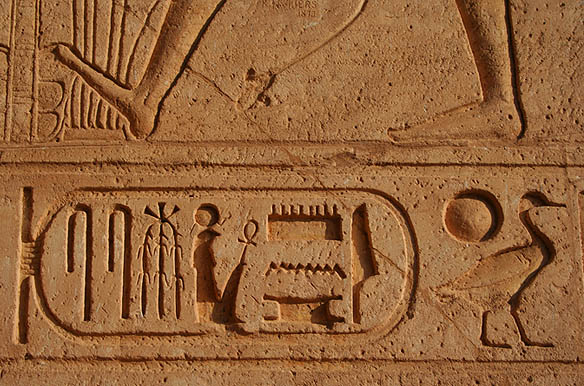 An example of the heiroglyphics covering the temple.  Looking out over Lake Nasser, which was previously mainly just desert. Oh, and home to thousands of now-displaced Nubian families. 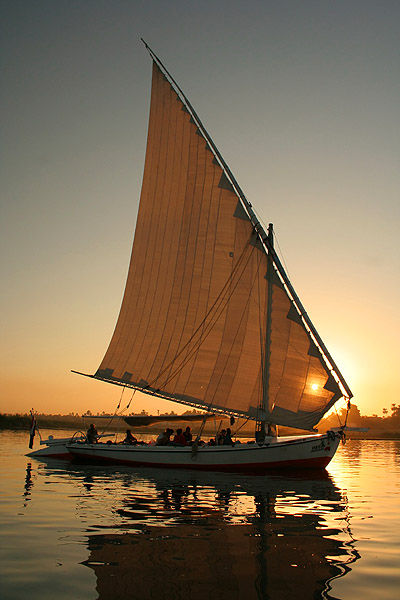 A Felucca - the traditional wooden sailing boat used in the Nile. My Felucca trip was to take two days and two nights, sailing (rather slowly) from Aswan to Kom Ombo, 45km down-river (north). 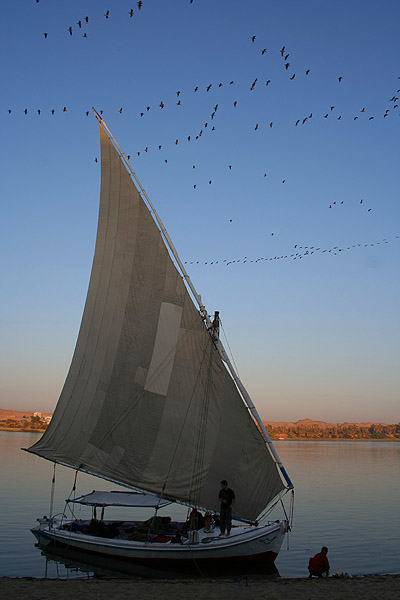 I'd never seen birds flying south for the Winter before, but they were doing so in their thousands, flying south along the course of the Nile. This is our boat at about seven in the morning, just after breakfast (yep, early start!). 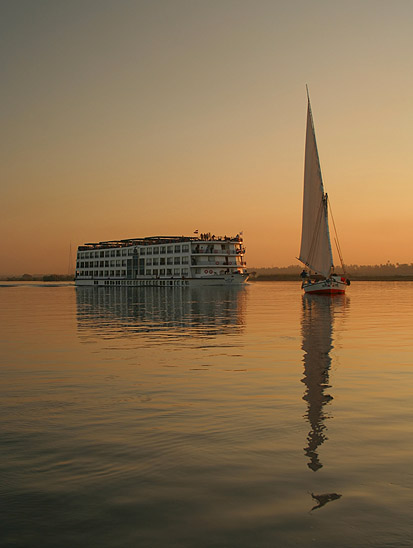 Other wealthier tourists chose to instead travel along the Nile in these horrible big noisy floating hotels. Personally I think they're all really missing out by not taking a Felucca.  Two men, wearing the traditional galabeya, captured through the exhaust fumes of one of those big stinky boats.  The serene image that greeted me when I woke on the morning of the last day.  A 'snake charmer' at Kom Ombo. At first I was happy to snap a few shots of him, but then found out that he's not the real deal - the bastard (pardon my French) sews shut the snake's mouth, leaving only a small gap for the tongue to flick in and out of. The snakes die within a few days. Rather disgusted with the guy, I refused to pay him money when he called out to me "baksheesh, baksheesh!".  The Temple of Karnak, close to Luxor. For me this was the most impressive temple I saw in Egypt. 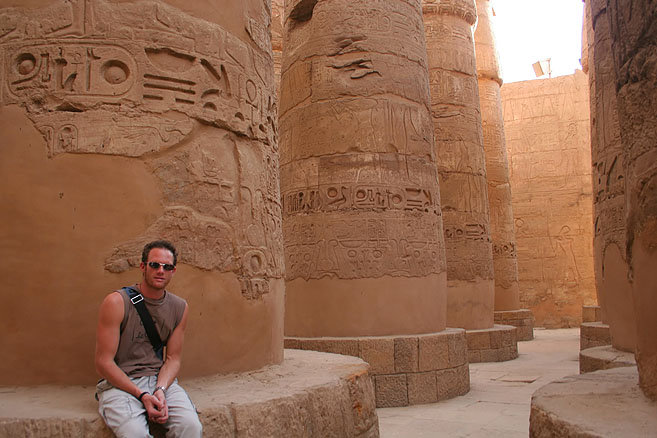 Sitting in the hypostyle hall, a complex of 134 20m-tall columns that supported the roof (each with a 3m diameter). Walking through here was absolutely mind-blowing. 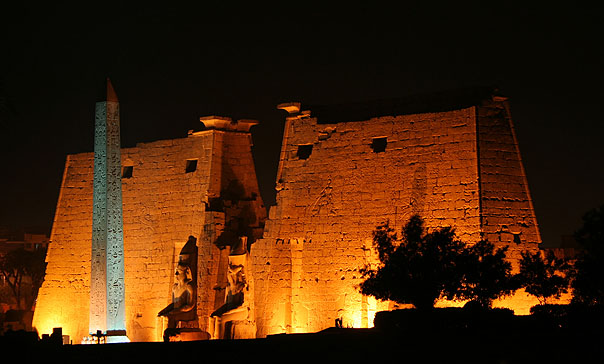 Luxor Temple at night. 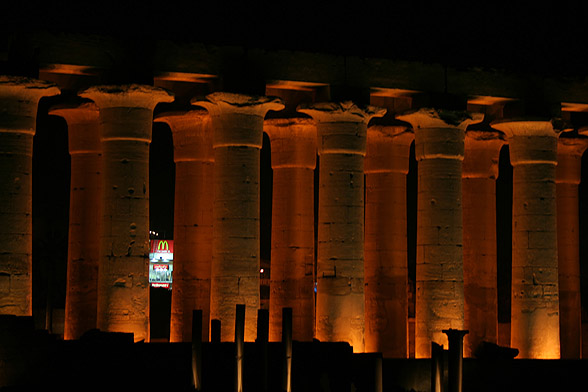 A sign of the times. A disgusting juxtaposition of Egyptian majesty with modern consumerism. 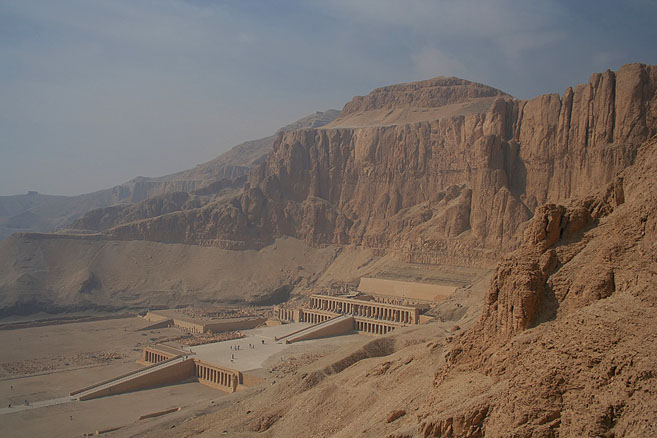 The three-tiered Temple of Hatshetsup in the Valley of the Kings, Luxor. Amazing on the outside, but dull and dissappointing inside.  One of the local workers at the temple, caught unawares.  Looking out over the Valley of the Kings, burial place for many of Egypt's Pharoahs. 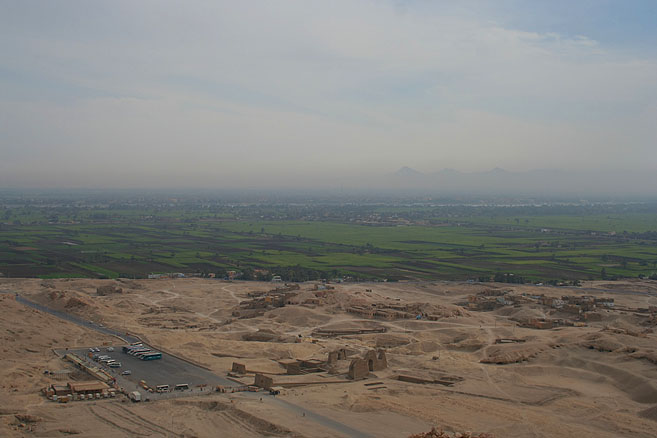 Looking out towards the Nile. A good example of how brown and dead the land in Egypt is, except for a thin green band running either side of the river.  The well-preserved wall paintings inside the tomb of Tuthmosis III.  Adil, the tomb guard who allowed us into the tombs for some baksheesh (a tip), rather than paying the fee at the main entrance to the valley. 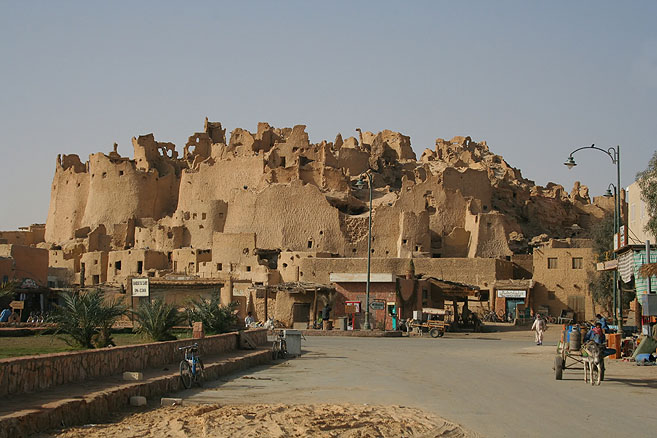 Shali, the mud-and-salt fortress village in the middle of Siwa that dates back to the 13th century, and was in full use until three days of heavy rain almost destroyed it in 1926. 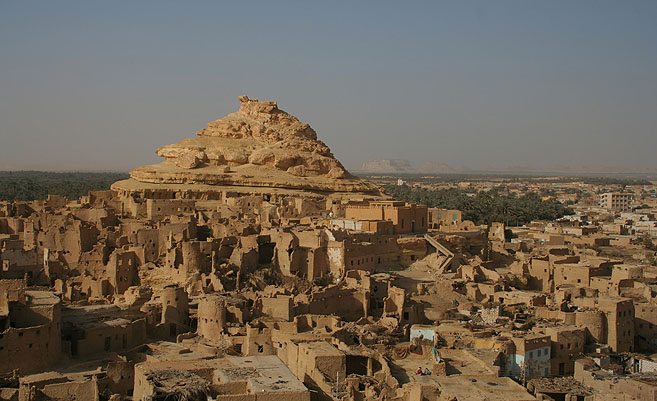 Looking out over Siwa (the western-most of the five major oases of Egypt) and the oasis, from the top of Shali. 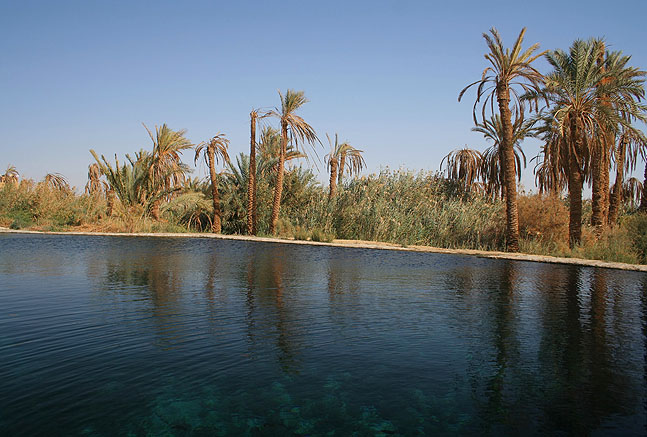 One of the natural fresh-water springs in the area. 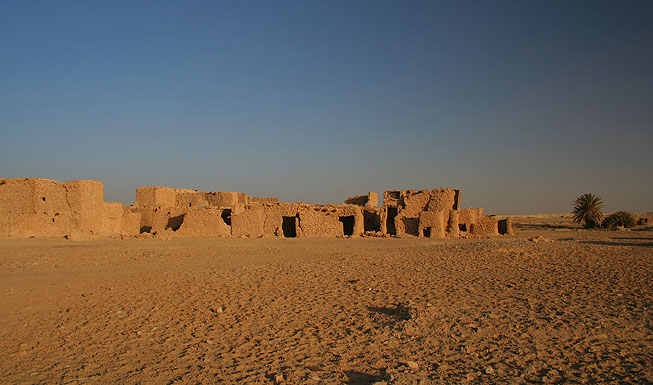 An abandoned mud village in the area. 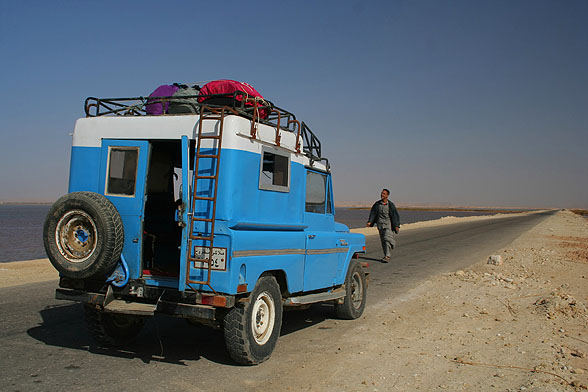 The jeep and Ahmed, the driver. 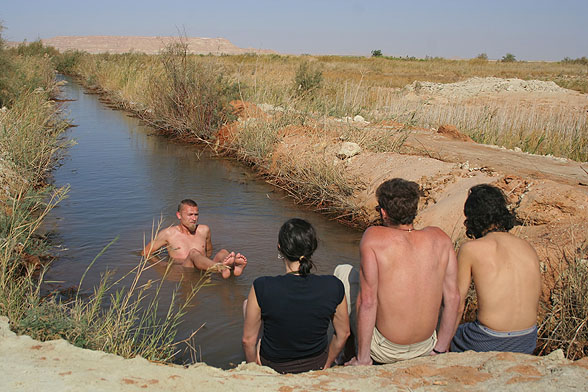 A hot spring we stopped at. Andreus the German guy jumped right in, but the rest of us found it impossibly hot. I could barely manage to keep my ankles under. 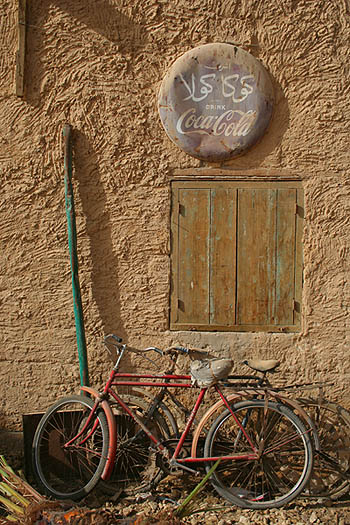 Enjoy Coca-Cola.  Sunset over the 'Great Sand Sea' on the edge of the Sahara Desert. Situated in western Egypt, it is the third largest sand-accumulation in the world, and one of the most un-explored places on earth. Spanning some 600km from Siwa, the Sand Sea forms a natural barrier between Egypt and Libya (about 80km away from where I took this shot). Nothing lives here but the wind, and nothing moves here but the sand. 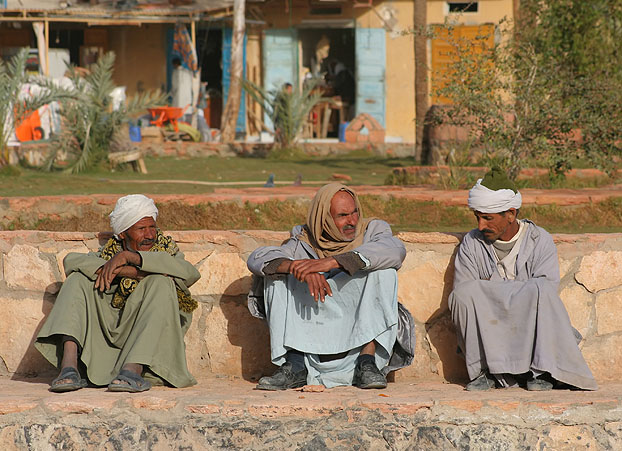 Some of the Berber locals sitting around near the town square. 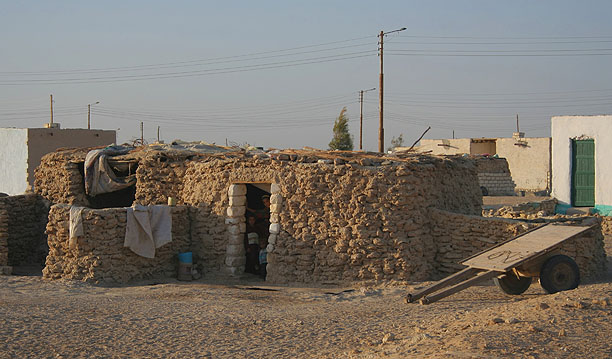 A house in a nearby Bedouin village. Look closely and you'll see some of them peeking out of the doorway back at me.  The beachfront of the famous city of Alexandria, along Egypt's northern Mediterranean coast. 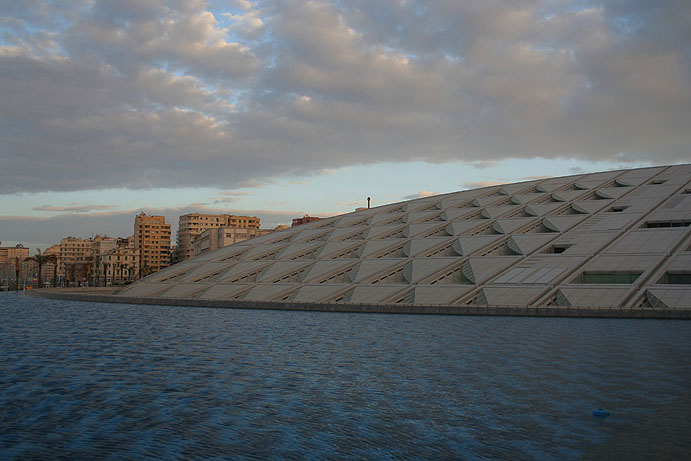 The brand new US$220-million Alexandria library, opened in 2002. It is supposed to represent the sun, rising out of the water.  Fort Qaitbey, overlooking the Alexandria's port.  Josh stares out at the Mediterranean. A gentle guy whom in some ways reminded me of my brother, I dubbed him Cowboy Jesus on account of his shaggy beard and hat. 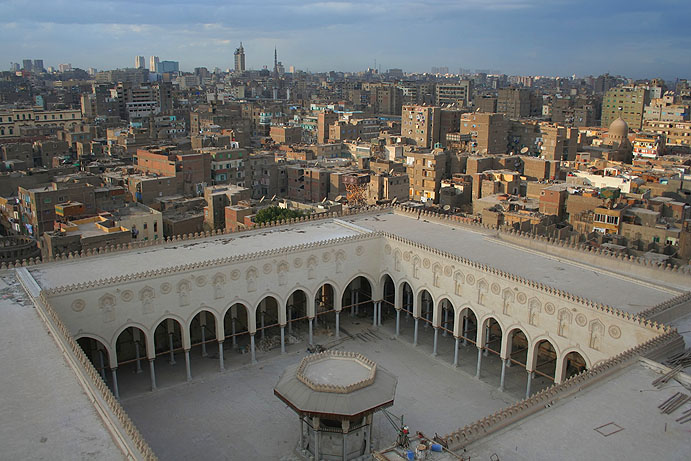 Looking over the city of Cairo, from atop Bab Zuweila, one of Islamic Cairo's main gates. 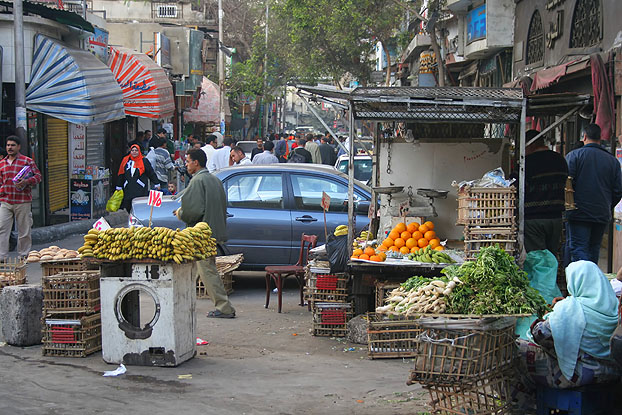 A Cairo street scene. 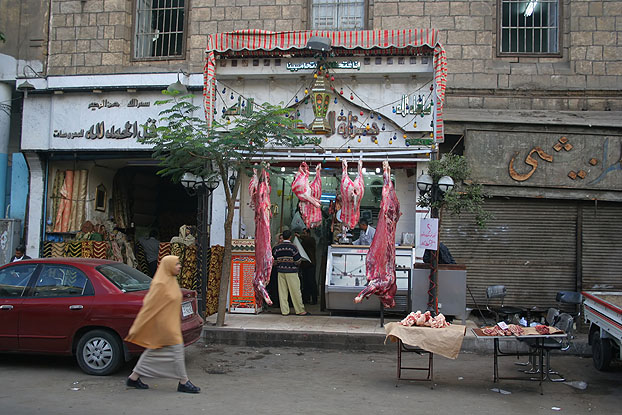 Little wonder that while in Egypt I tried to steer clear of meat whenever I could. 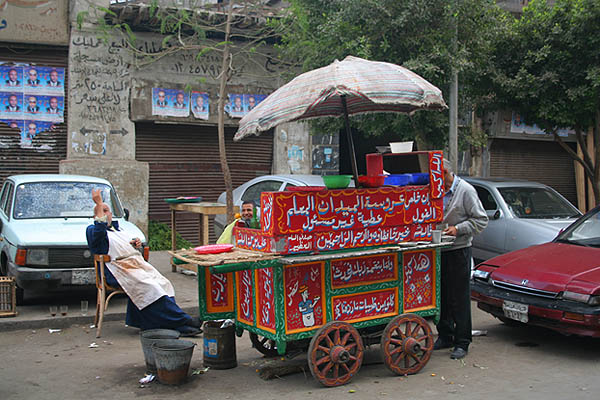 A street vendor's cart, selling fuul - mashed fava beans in pita bread. I'm not a big fan. 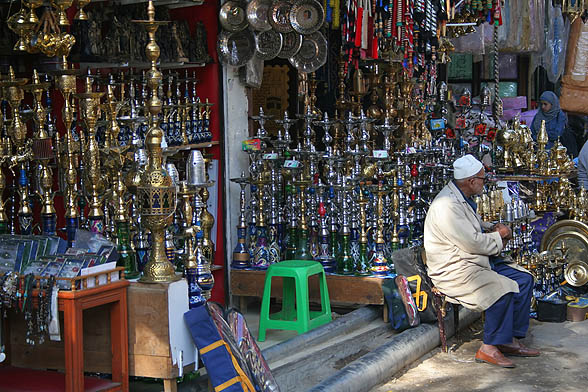 Sheesha pipes for sale in Khan el-Khalili - the market area of Cairo. 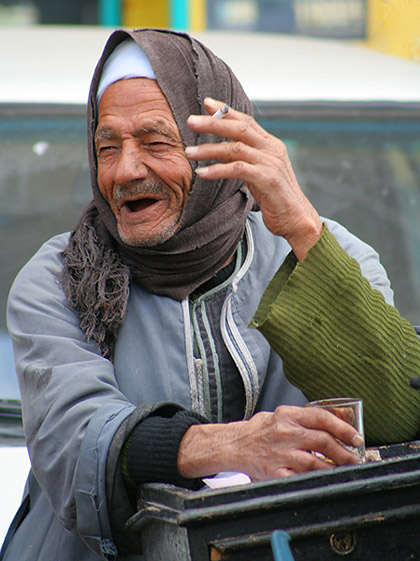 An old Egyptian man selling baked sweet-potatoes on a busy Cairo street takes a tea & cigarette break to chat with a friend. 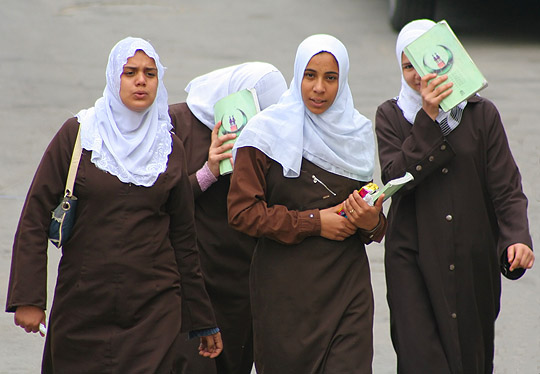 Egyptian schoolgirls. Surprisingly, they tended to be very giggly and flirty around foreign guys. 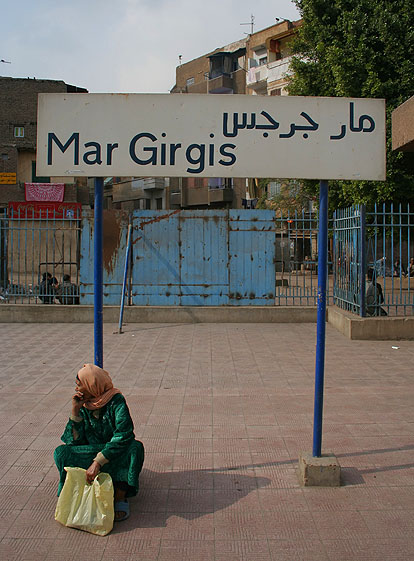 The train stop for Coptic Cairo, an old Christian area of the city. 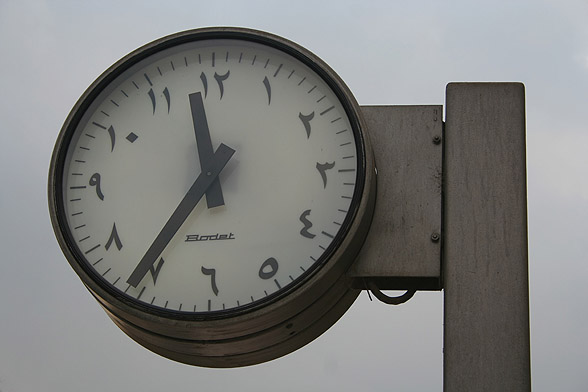 A clock at the station showing Arabic numbers, which I learnt to read (out of necessity) back in Syria. 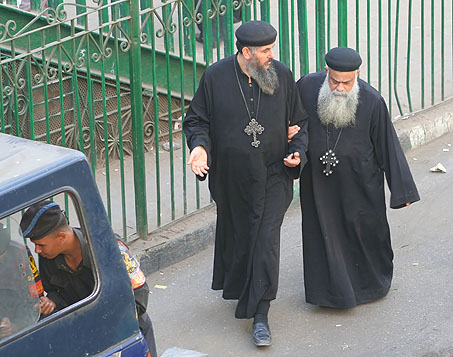 Coptic Christians. 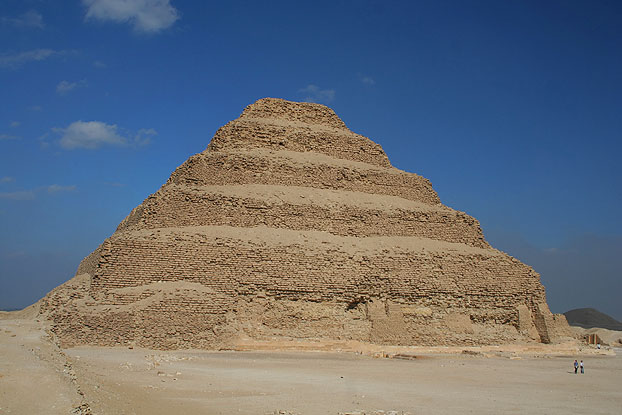 The Step Pyramid in Saqqara, just outside of Cairo central. It was the first proper pyramid, built for King Zoser some 4,700 years ago! That greyish cloud on the right is the smog hanging over Cairo. 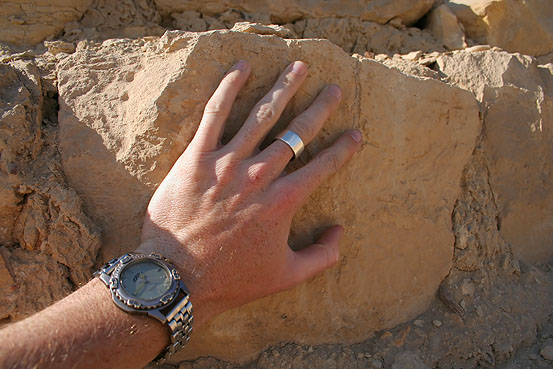 Connecting with almost 5,000 years of history.  Looking towards the Giza pyramids from Saqqara, with the Abu Sir pyramids in the foreground.  The wife of my host Samir - making tea on the floor of their home in Abu Sir, near Saqqara. I was invited in for a huge, fantastic lunch and sheesha. If they're not trying to get money from you, I found that Egyptians can actually be exceedingly kind and hospitable. 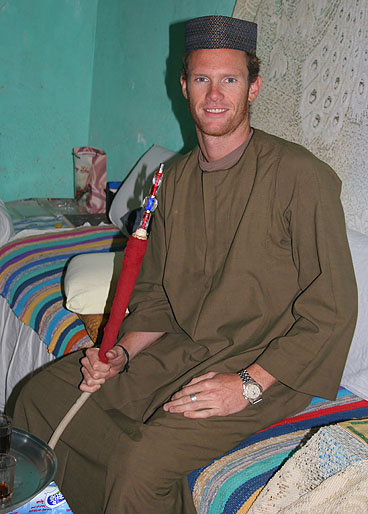 Samir had me try on his galabeya and pose for photos. Trust me, it wasn't my idea, but he was loving it! |
< previous next > |